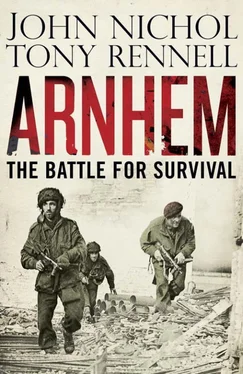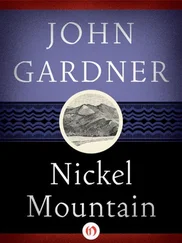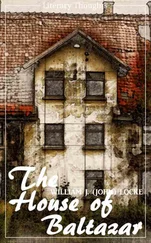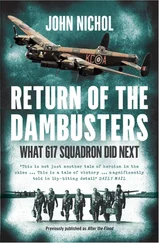Model was the master of the counter-attack, which, with two crack SS panzer divisions fortuitously on his patch to recuperate and refit after Normandy, he was now mounting. So much for the briefings to the likes of Ron Brooker that they would be up against old men and second-rate troops. The reality, as he was now discovering amid the deafening sound of explosions and the scream of mortar shells, was ‘unexpectedly heavy resistance’. It was coming from one of those SS battalions that had been on a training exercise in the woods around Wolfheze when the landings began. Guessing before everyone else that the Arnhem bridge was the target, its commander deployed his machine guns and heavy guns in the woods and on the key roads to slow the British advance almost before it had begun. With more troops and tanks soon on the way, a crucial blocking line was beginning to be established between Oosterbeek and Arnhem.
Reg Curtis ran into it as he and his company nosed their way forward. ‘Suddenly there was a loud explosion up ahead and sporadic machine-gun fire as our lead company came under hit-and-run jabs from the enemy. Mortar bombs whined and bullets slashed the undergrowth. The smell of war was in my nostrils.’ The whole battalion was forced to lie up in woods ‘for what seemed like hours, pushing on occasionally but cautiously’. The dismaying fact, as he now realized, was that the enemy were all around. He could even see their vehicles from time to time. Any advance was ‘rough, tedious, plodding along winding lanes and woods’. Hope soared when scouts reported that the main road into Arnhem was just ahead. But then, disaster. Cruising up and down the road were lines of heavily armed German half-tracks. ‘We lay doggo beneath the trees not 80 feet away and watched this display of enemy armour. We had no choice. To take on this little lot would have been slaughter for us.’ There was going to be no quick march into Arnhem. It was back to groping their way slowly through the woods.
For one group of men, the battle now developing was a particular challenge. The glider pilots had done their ferrying job and done it well. But unlike the airmen who flew the tugs or the transporters that offloaded the parachute troops, they did not have the luxury of turning round and cruising home to a beer and a sing-song in the pub. They were grounded alongside the troops they had carried, and with a new job to do. They were trained to be soldiers as well as pilots: ‘We were flying infantrymen,’ as 27-year-old Alan Kettley put it. He had been called up as a soldier back in 1940 and, in the aftermath of the Battle of Britain, applied to the RAF. He passed the tests, was told he was too old to be a pilot but could be a navigator, ‘and I thought, “Great,” and waited and waited and never heard another word. I discovered my CO didn’t want to lose me so had blocked my transfer.’ But flying was in his blood so, when in 1942 appeals were made for men to train as glider pilots, he volunteered and was accepted. ‘In the run-up to Arnhem we didn’t think how tough it was going to be or how bad it was going to get. I thought, “We’ll get there, hold the area and then XXX Corps will arrive. Four or five days, that was it.”’ So, after expertly landing his glider, he reported for general duties. ‘You’re on the ground, you’re in enemy territory, but nothing to worry about. You go from a glider pilot to a fighting soldier but that’s what we were trained to do. And as I had been in the infantry I knew about rifles, Bren guns, Sten guns, mortars and so on. Everything was going perfectly as far as I was concerned. Our orders were to defend the landing zone until the next day, then to make for the bridge with the trailer and the ammunition.’ As he settled down for the night on the edge of the landing zone, he was relaxed. ‘I had no idea how things were going to change over the coming days!’
Peter Clarke joined his group of glider pilots at their rendezvous point at a school building near the end of the field where they’d landed. Outside, some fellows were lolling under trees, just as if they were on leave and waiting for the pub to open. They were elated at their success so far, but their buzz of chatter was overlaid with some anxiety. They could hear gunfire, ‘and when you first hear gunshots and mortar you suddenly realize where you are and the danger you might be in.’ He wasn’t too concerned, still confident that the bridge would be taken in no time ‘and then we would move back to England ready for the next operation. We’d be out of there within a few days.’ He was relaxed about doing his bit as an auxiliary soldier. ‘If you had an infantry background, as I did, you were prepared for this sort of thing. I’d learned to shoot on a Lee Enfield.’ But there were – as he later came to realize – big gaps in his training. ‘I hadn’t done any actual infantry exercises and never been taught how to go on patrol. Nor had I been briefed on what to do if I was captured.’ Before becoming a pilot, he had been a medic. This, though he didn’t know it yet, was the experience that would stand him and his comrades in the greatest stead in the days ahead.
Of the glider pilots, Major Ian Toler was more wary than most, but then he had the burden of command. ‘It is all too quiet,’ he noted after landing, ‘ominously so.’ He got his men to dig in and showed the way so vigorously with his spade that his hand came up in blisters. He logged his casualties. Four men missing and two wounded. ‘They were unlucky enough to land within a few yards of an enemy machine gun, which opened up, killing some and wounding others before it was liquidated.’ That night he took the advice of an infantry officer and piled up more earth around his trench. He slept fitfully and then, when he stood his watch, heard spasmodic gunfire coming from the direction of Arnhem. Another of the men on sentry duty recalled the ‘fearsome’ whine of ‘Moaning Minnie’ mortars in the distance. But the next morning, the weather clear and sunny and after a breakfast of porridge, meat tablets and biscuits from his ration pack, the major felt better. ‘Everyone is strolling about and it is just like an exercise, only we see the padre burying one of our men who has died in the night. Perhaps this is the real thing after all.’
For some pilots, there was no ‘perhaps’ about it. Staff Sergeant Ronald Gibson, one of the last to link up with his regiment because it took so long to get the bolts out of his glider’s tail to release the contents, went from bus driver and delivery boy to infantryman with scarcely time to catch his breath. No sooner had he caught up with his column than they were heading east, down a tree-lined track and into a village. There was a fulsome welcome. Children ran to them with apples. He was especially moved by an old man in a blue cap who saluted them as they passed. ‘Suddenly there was the loud crack of a gun and a cloud of earth burst up from the pavement. We dived headlong for the bank of leaves at the foot of the trees.’ [5] Nine Days , by Ronald Gibson. Arthur Stockwell, 1956. The authors are grateful to his daughter, Candy, for permission to quote from it.
When they got up, all those happy villagers had vanished and there was a huge shell-hole in a fence. There was no sign of the enemy. He discovered that the shell had come from a German armoured car which had fired as it crossed a road junction just ahead and then disappeared. The British soldiers took cover again.
‘I lay down beside a woodshed and peered forward through a screen of grass and nettles over a field where some dappled cows were cropping the grass. A chilly silence had followed the crack of the gun and I could hear the sound of their munching. I felt a hand touch my shoulder. I turned to see the old, blue-capped Dutchman standing with a jug of milk in one hand and a cup in the other. “You here, we free,” he said. I thought what a farcical war this was. We were crouching in a garden, waiting for the enemy to show his head, while an old man was pottering about, quite unconcerned, attending to our comfort. I had seen a similar instance in Normandy – a crowded village street, with British infantry filing along the shadow of a wall after a German sniper hiding in the churchyard, while old women hobbled over the stones with baskets under their arms on the way to the baker’s shop. The old man then brought us a bowl of plums, crawling round the corner of the shed on all fours so as to avoid revealing our position.’ This intermingling of soldiers and civilians would be repeated throughout the Arnhem campaign and be one of its most distinctive features, a triumph of trust and solidarity between two nations fighting very different types of war but against a common enemy.
Читать дальше












